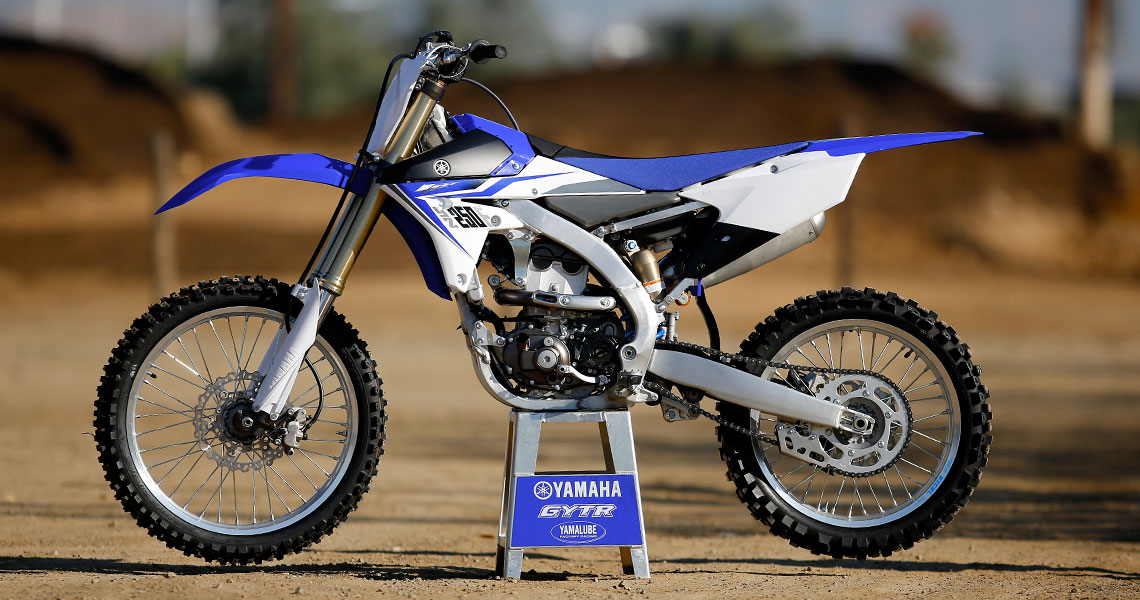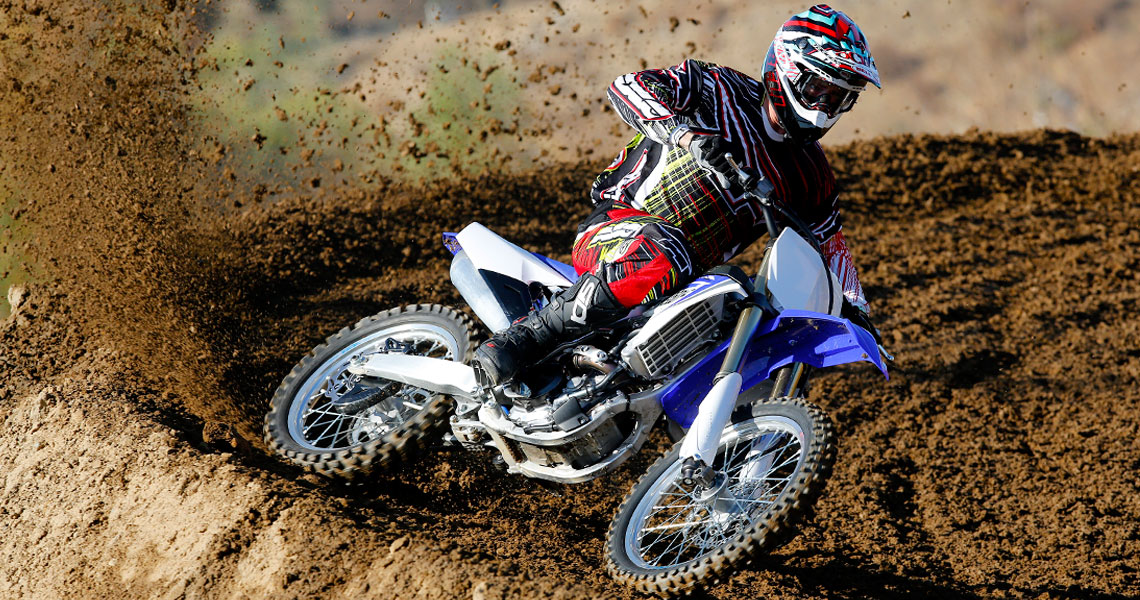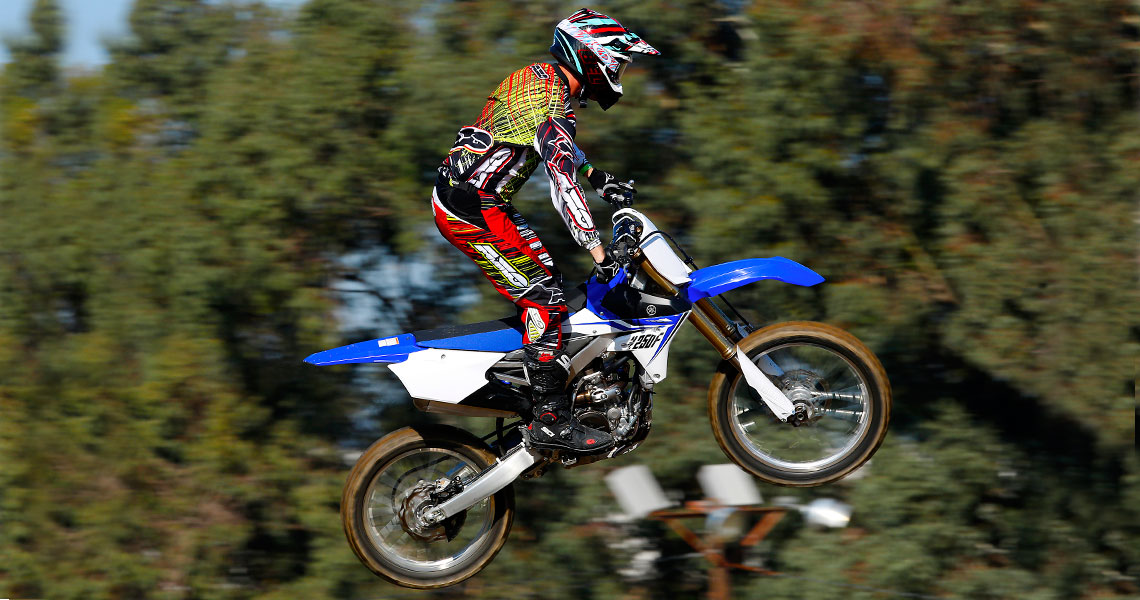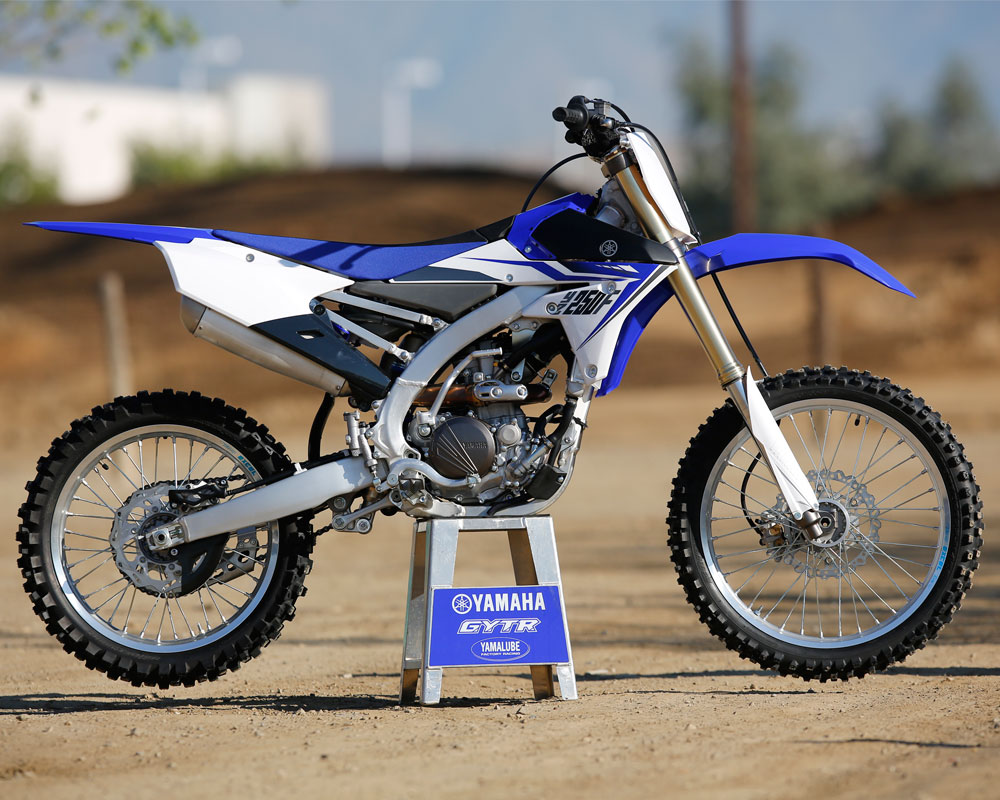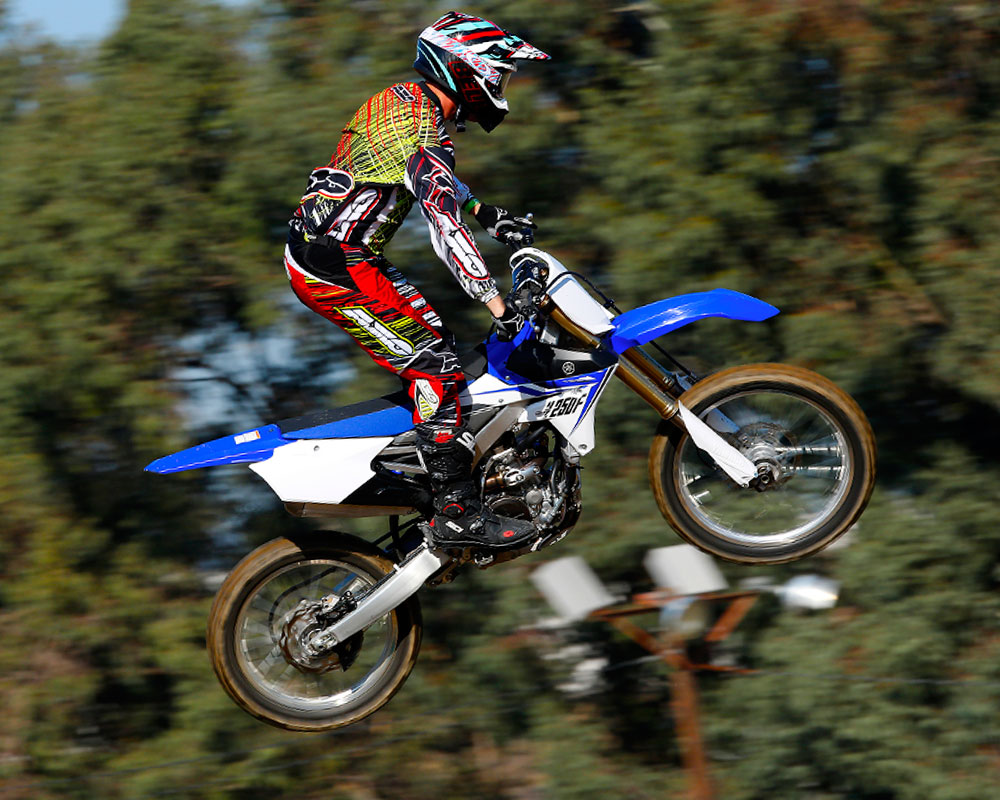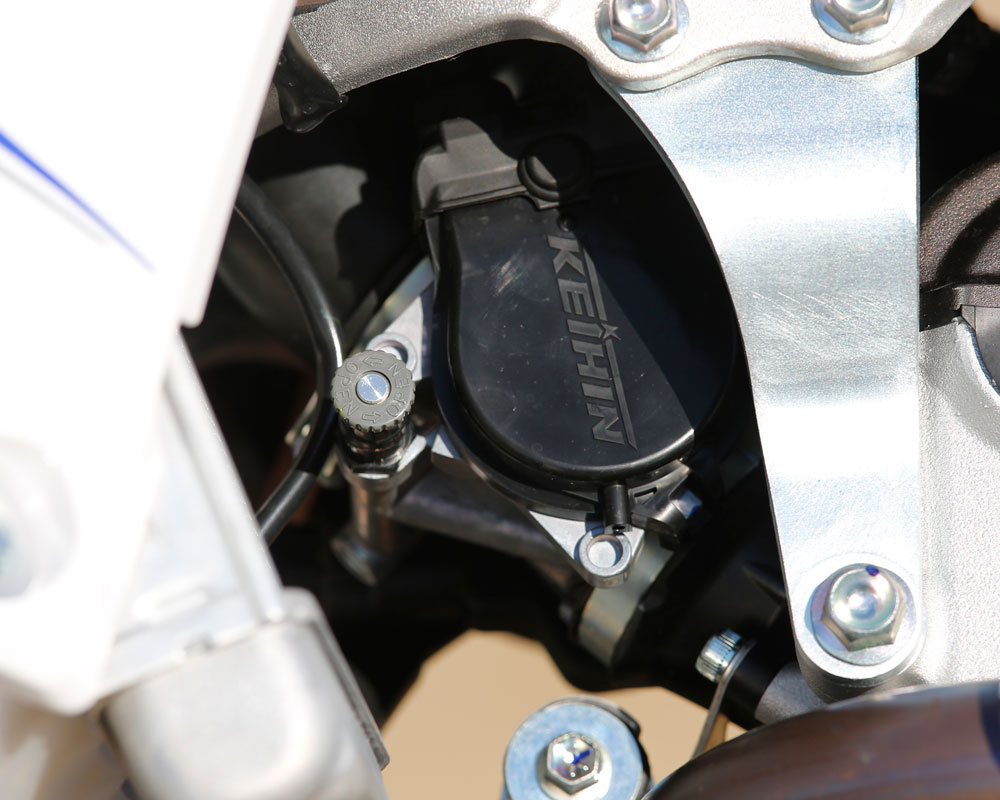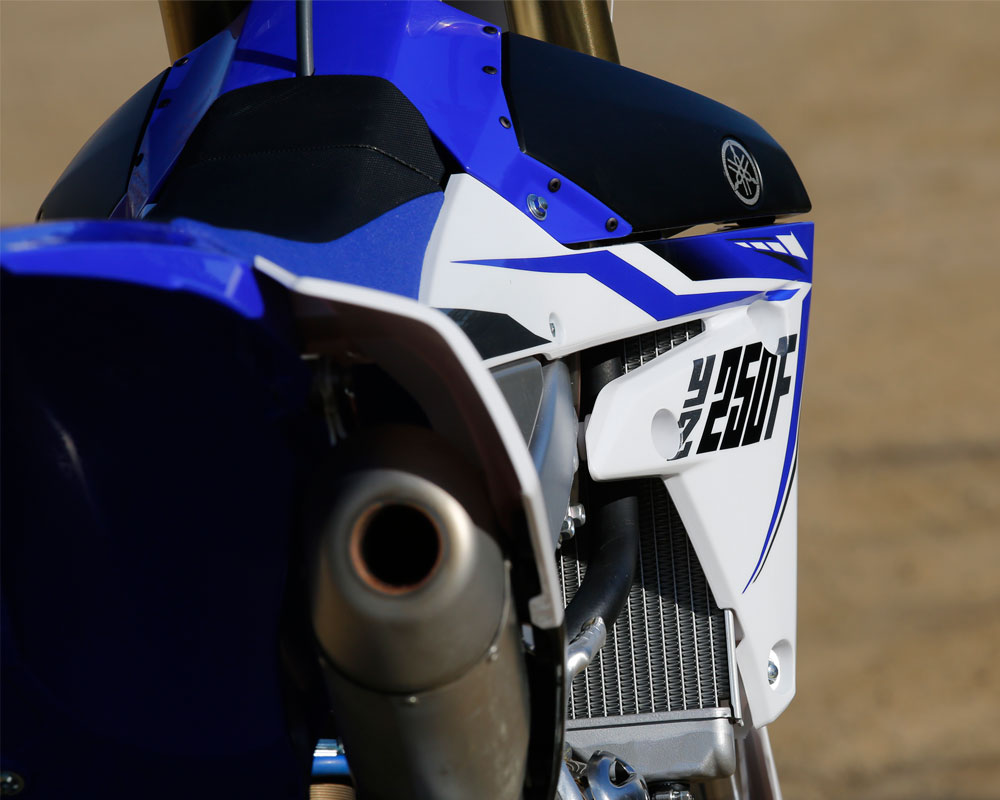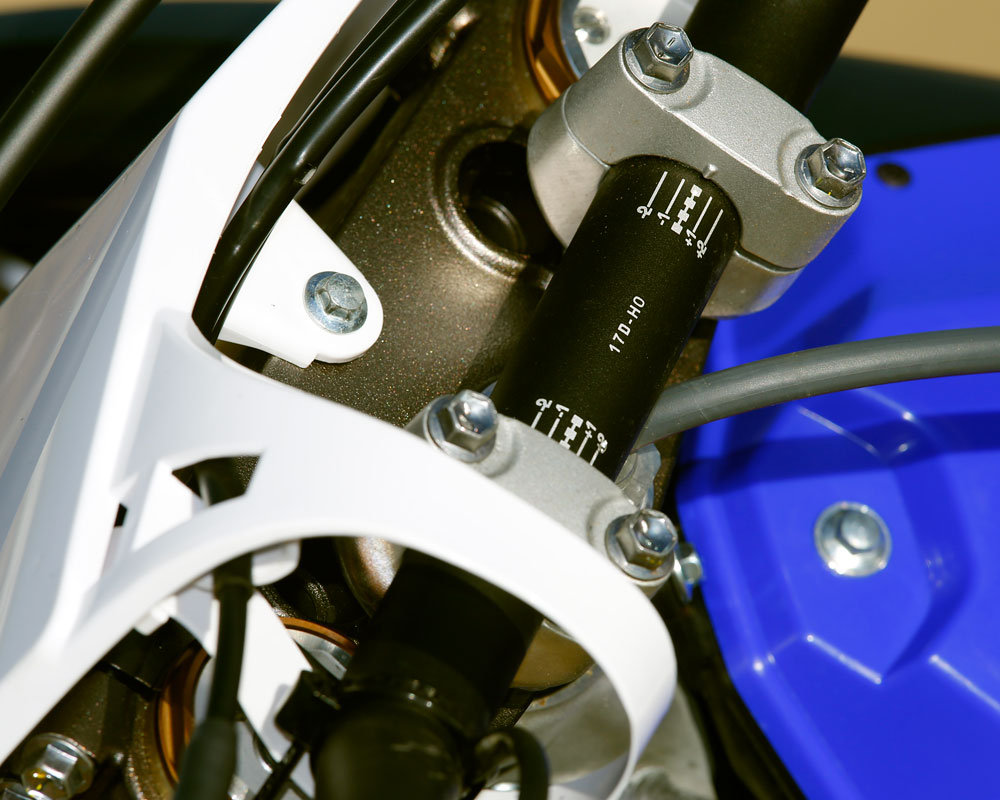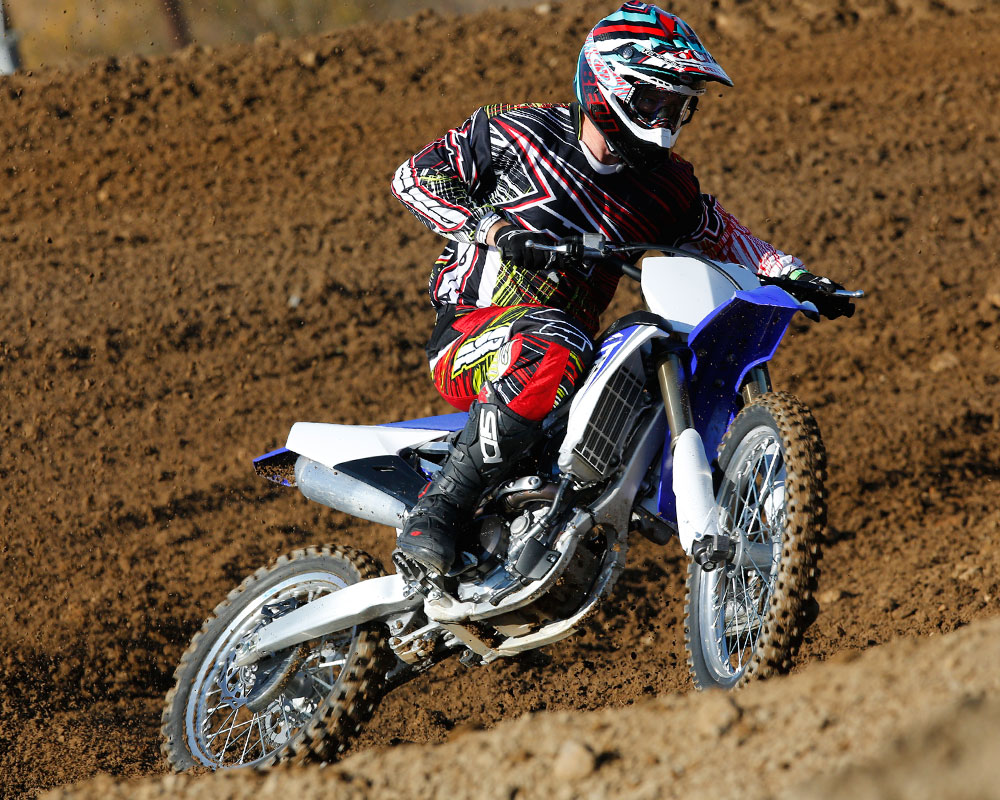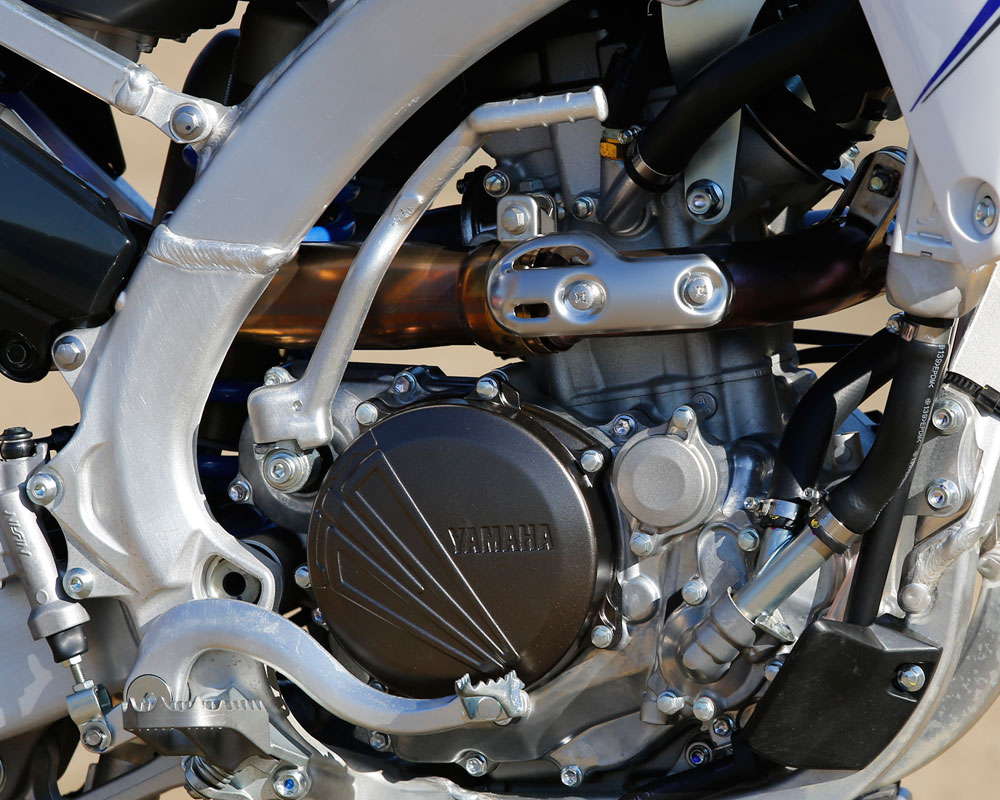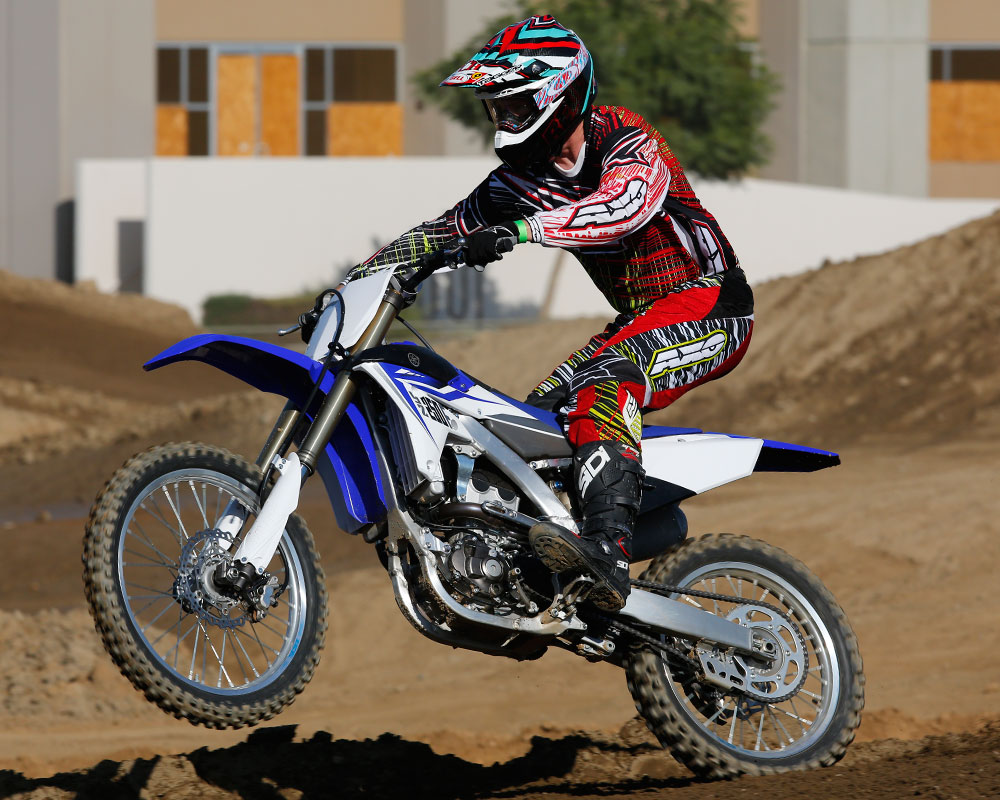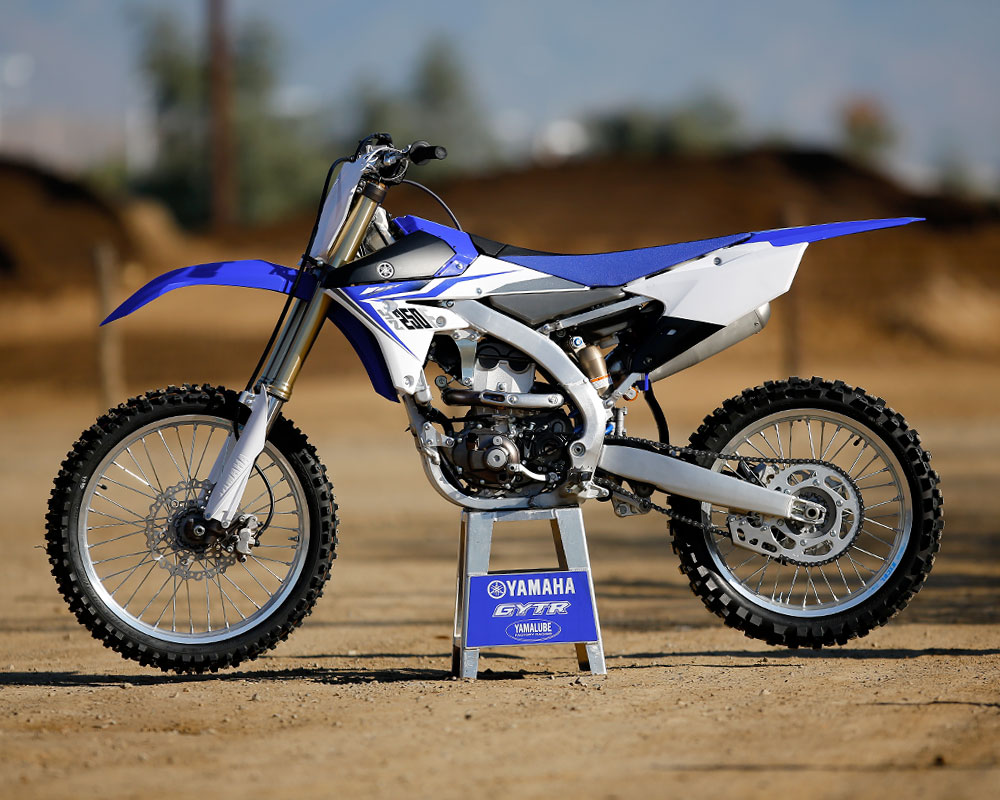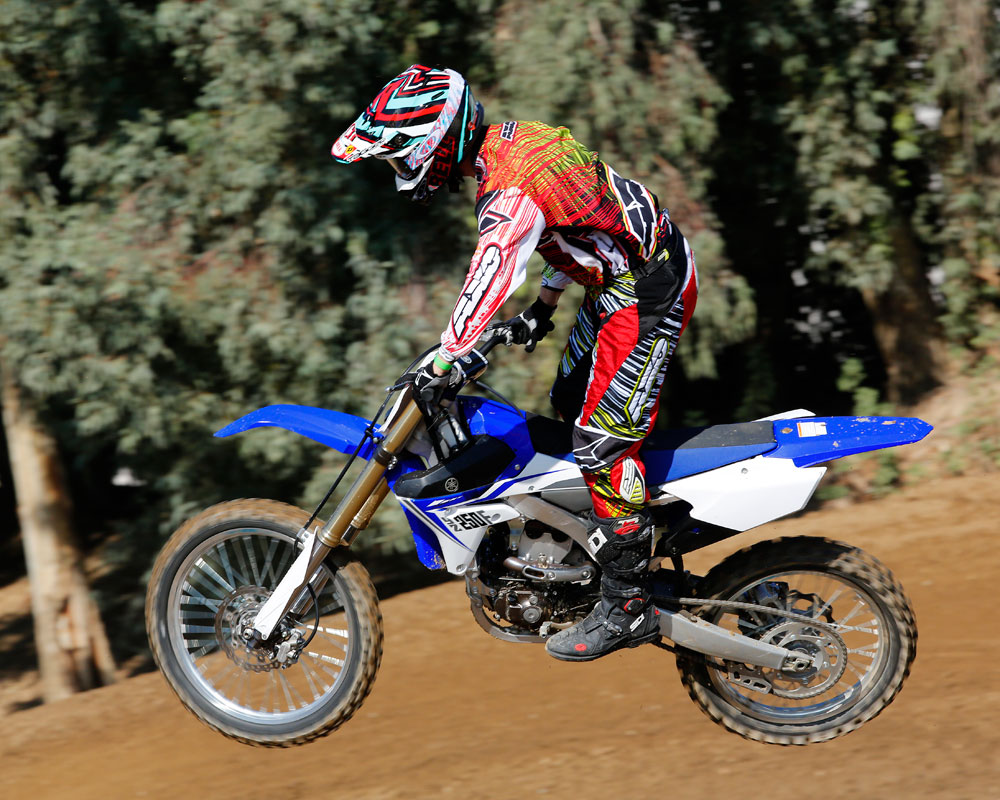2014 Yamaha YZ250F
Proving A Point
MSRP: $7490
- Power that takes the best traits in the class and merges them into one fast 250F.
- A handling and suspension package that works as a package, a good package.
- Yamaha builds a high-quality bike and the track record for durability is high.
- The front of the bike appears wide, especially high on the radiator shrouds.
- Is putting the gas into the tank under the seat an issue?
Introduction
- Will the reversed intake/exhaust concept get a second chance for Yamaha in motocross?
Yamaha is sticking to its guns with its reversed take on a motocross bike. The reversed cylinder head, reward slanting engine profile and serious centralization of mass is getting a second new push in the 250cc class, where maybe, just maybe, the concept will get a second chance.
Initially approved in the 450cc class then quickly falling out of flavor with high-profile racers, then most magazines, the 2010 YZ450F has had a rough track to follow, if you keep track of that stuff. Though by most accounts, owners of the bike were mostly very happy with the performance. So much so Yamaha, a company never shy about abandoning a concept if it didn’t work, revised the 450, keeping all the stuff that was blamed for whatever problems it created, and in doing so adopted the same technologies to this all-new for 2014 250F.
Changes
- All-new 250F motor that mirrors the reversed cylinder-head design and reward slant of the YZ450F.
- Completely new chassis also copying the 450 and sharing a lot of parts too.
- The concept revolves around mass centralization which, in theory, should make for better handling.
For the YZ250, there isn’t much that stayed the same from 2013. It is an all-new bike. And though this isn’t the way Yamaha would like it worded, they threw the new 250F motor into the new 2014 YZ450 chassis, to make it simple. Or maybe they stuffed the YZ450 motor into the new YZ250F frame, we’ll never know. Either way, Yamaha got smart and started unifying the parts they use to make their bikes.
But it isn’t an exact match, there is a lot of tuning that goes into these “identical” chassis bikes, and being smart here makes all the difference. The engine mounts, of course are different, especially the lower fixed mount on the engine and the hangers that attach to the side of the cylinder head. The perimeter of the aluminum frame is exactly the same, as is the gas tank, seat, radiators, upper air box, sub-frame and pretty everything else except everything from the intake tract through to the muffler. All that is YZ250F specific. And also 100% new.
The design of the motor goes from a five-valve dry-sump design to a more conventional four-valve DOHC wet-sump engine. The valve angle gets tighter and the biggest advantage to the now-reversed cylinder head is a direct downdraft into the combustion chamber, which Yamaha claims will be a big advantage in future tuning to get increased power.
The rearward slant of the motor also includes a few other power and tuning characteristics, some of it being in a more centralized mass, or putting some of the highly-placed weighty items closer to the center of the bike. The circular wrapping of the exhaust system makes up for any lost header distance and furthers the mass centralization of the bike.
Power
- Easy kick-starting.
- An amazing combination of smooth yet aggressive power blended together.
- Yamaha's GYTR power tuner makes changes simple if track or modifications call for it.
The YZ250F starts as easy as any current four-stroke, and like most FI bikes is ready to go even before the bike warms. Throttle response is spot on and the bike definitely has a different character in everything, including the sound. The engine has come of age. If Yamaha was trying to win the 250F motor game, for most riders they have succeeded.
The character could be called very smooth and very aggressive in the same sentence, like they took all the smooth cues from the Honda CRF250R and the KTM 250SXF then stole some Kawasaki KXF250 aggression near the bottom end with snap and built the powerband nobody thought possible. It isn’t as defined in any one specific area as all the above mentioned engines, but as a package it gives each a run for its money and outshines them all in total. It can be smooth and torquey for a 250F with smoother throttle application, and it can burst into power and spin right up with aggressive twists of the right grip.
The clutch has a light pull and great feel so you can use it to your advantage, but you don’t have to. Shifting is improved from the previous engine design and even on a tighter track with larger riders we felt the gear spacing was spot on and could even get away with dropping a tooth on the rear, the power was that good.
And Yamaha has a very interesting feeling at the very top of the powerband, if you feel the need to rev the bike that far. It has a tapered-feeling rev limiter where the power does not just cut off but rather signs off gradually before the rev limiter really tells you that you have gone too far.
We even played with Yamaha’s EFI tuner to see if there was anything that we’d like to change compared to the standard map, and there was not. Settings that worked on the 450 to enhance the bottom end power did little, if anything, on the 250F, and the same was true for boosting the power on the top. The stock setting turned out to be the best for the stock bike. But having the simple tunability to make changes in a matter of minutes for track conditions and different modifications you may do to the bike is a really handy feature. Especially as simple as the Yamaha tuner is.
And then there is durability, which for the past has been a real Yamaha strong point. This year Yamaha went to a decreased oil capacity and a longer service interval between changes. We’ve been told that a fast rider, or one who is hard on the bike, needs to be looking at doing a top end--including a crank--at the 40-hour mark. All that performance has to come at a price.
Suspension
- The YZ250F has struck a fine balance for a production 250F in the suspension department.
- Even the standard clicker settings were spot-on.
- Like most bikes, the high-speed shock compression really works on adjusting the attitude (functional ride height) of the bike.
Suspension on a 250F is a tricky game, especially in deciding to which weight rider the bike will be set up for. Yamaha targets a fast 160-170 lb. rider as the target, and the setting seemed to work for our wide ranging weights. We had riders ranging from 210 lb. vets to 140 lb. intermediates, and quite a few in-between, take a spin on the bike and surprisingly everyone really likes the suspension--enough that we never came away with a better setting and returned to standard if trying to tweak with the clickers. Always trying to keep the ride height at the standard 100-105mm, which was tough with our heavy riders on the standard springs.
The action of the fork and shock can only be called excellent. The ride is never harsh, but it is not as plush as previous YZ250Fs by just the slightest bit stiffer. Then it is extremely progressive feeling and really uses the whole stroke of the travel without ever getting too stiff in the valving. The bottoming resistance is very good and on the rebound side the bike does not kick at all.
As we have found with a lot of bikes, the high-speed compression on the shock can really be used to change the feeling of the ride height, with some added compression keeping the bike a little higher in the stroke, especially going into and in the turns.
Chassis - Handling
- A very light and nimble feeling bike that does not give up on stability.
- Neutral handling--It turns, tracks, slides and is flickable, All positive.
Having a light feeling is the name of the game in the 250F class and the Yamaha is right there with this feeling. It feels so much lighter and especially more nimble than the old bike, it is surprising. But Yamaha has kept some weight in the handlebar, or more specifically in the steering of the bike, and this is a good trait for most as it adds some confidence, and adds to the feeling of stability. And in being light the bike also retains a very planted or connected feeling to the ground.
A lot of it is the suspension being so good but it also has to do with the placement of the engine. Where the 450 and its heavier motor have been said to feel like there is too much weight on the front wheel, and that the rear of the bike is said to not want to power-slide out controllably or whip out in the air, the lighter 250F motor drew no such complaints. It is flickable in the air and will drift into a powerslide as easy as any bike. It is still a front-wheel biased turning bike, no doubt, but turning with the rear stepped out does not feel anything but good.
The layout of the bike is roomy but the looks of the width of the bike will summon caution in some riders. Yet the areas where you put your legs or move forward on the bike are not that wide, it is a visual thing. The handlebar position is also adjustable to add some room and position the bar farther forward if a rider feels the need. Seat padding is excellent and we never noticed the front portion that conceals the gas cap, since the gas tank is mostly under the seat. The brakes are excellent, never too grabby and with great feel and stopping power.
Conclusion
- Yamaha took a risk in copying the YZ450F's non-standard concepts.
- It seems those concepts work even better on a 250F.
There is no doubt Yamaha took a lot of risk introducing a 250F that basically copies all of the concepts the YZ450F, a bike that some of the media and quite a few top riders are not too sure about. But judging from the minor refinements it took to catapult the YZ450F into a much improved bike, and in our very first impressive impression of this YZ250F, the concept has merit. Enough merit that we can’t really find a fault with this Yamaha.
It was well received by all levels of riders since the engine is not only easy to use, it is very fast. The handling and suspension, for most riders do no wrong. Yamaha started the 250F revolution, basically killing the 125cc two-stroke and reinventing the smaller bike in motocross classifications. Since then the competition has gotten serious and kept Yamaha behind them. Now that has changed. This is the 250F to have.
Recent Product Tests
What Others Said

http://motocrossactionmag.com/home-page/first-ride-the-all-new-2014-yamaha-yz250f

http://www.motorcycle.com/manufacturer/yamaha/2014-yamaha-yz250f-first-ride.html

http://www.dirtrider.com/features/first-ride-2014-yamaha-yz250f/
Rider Opinions
Leave a Reply
